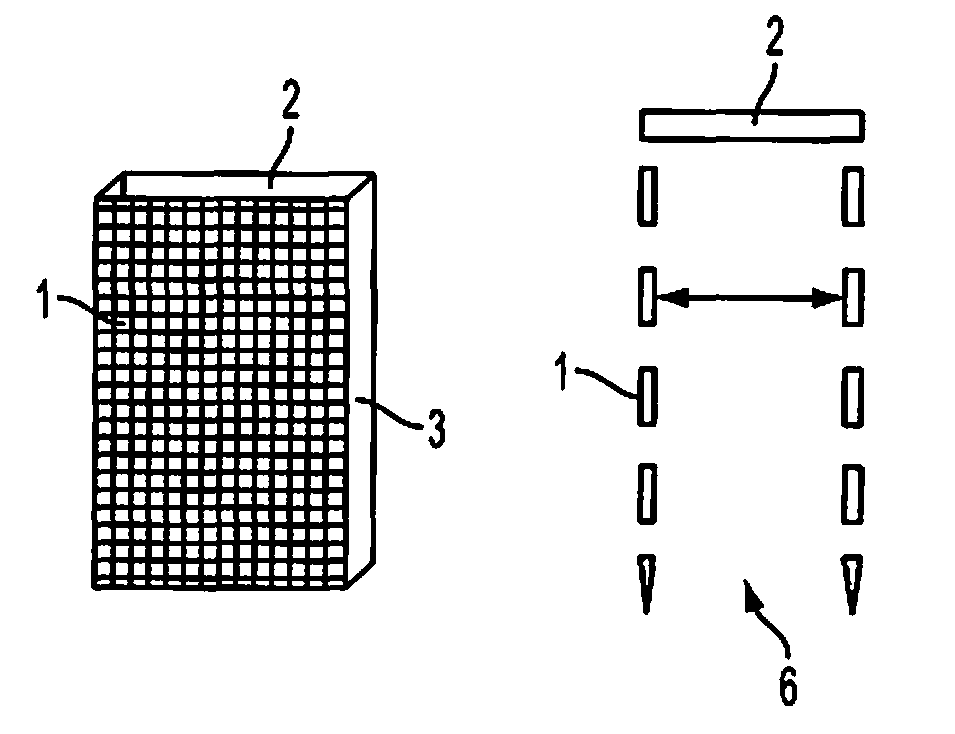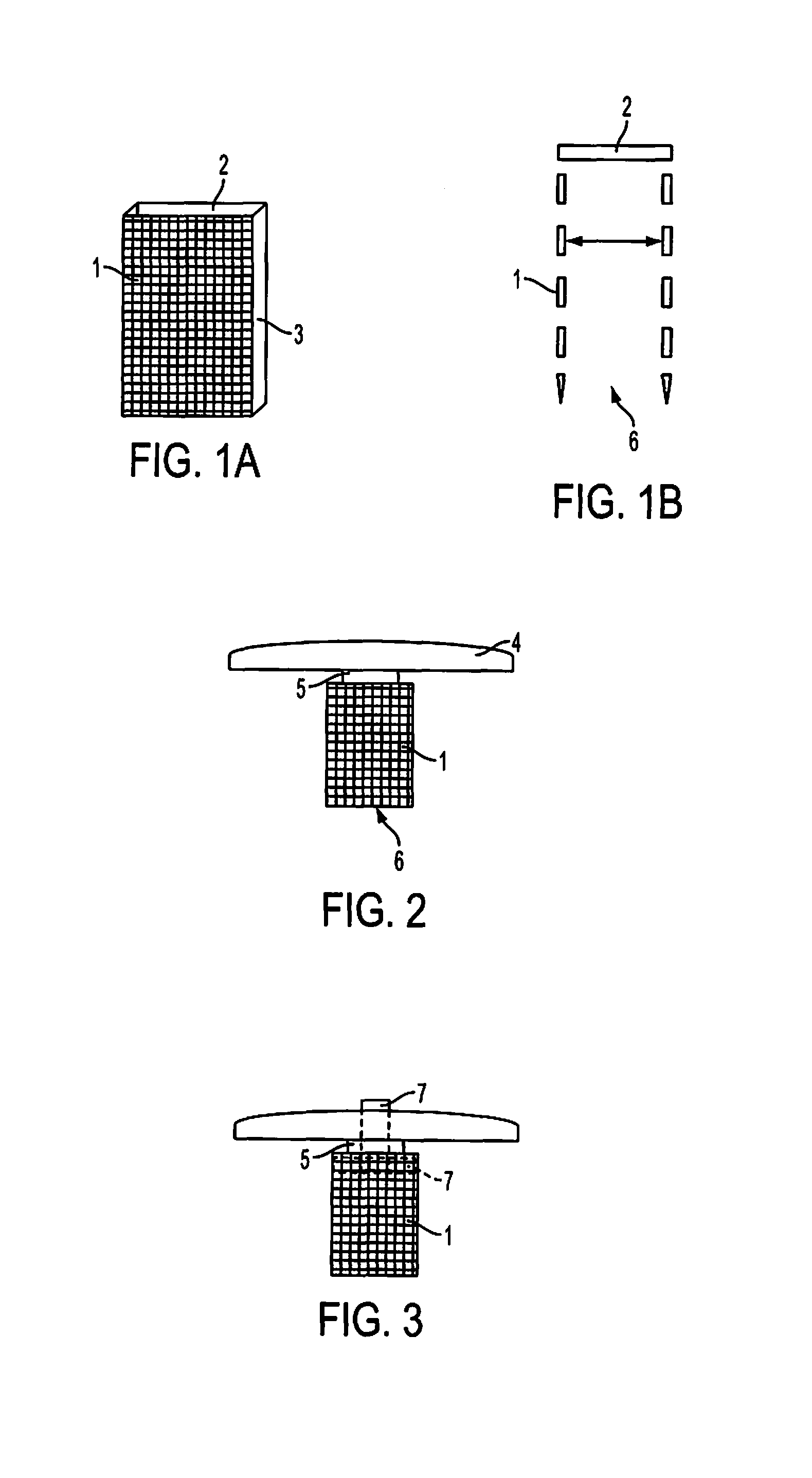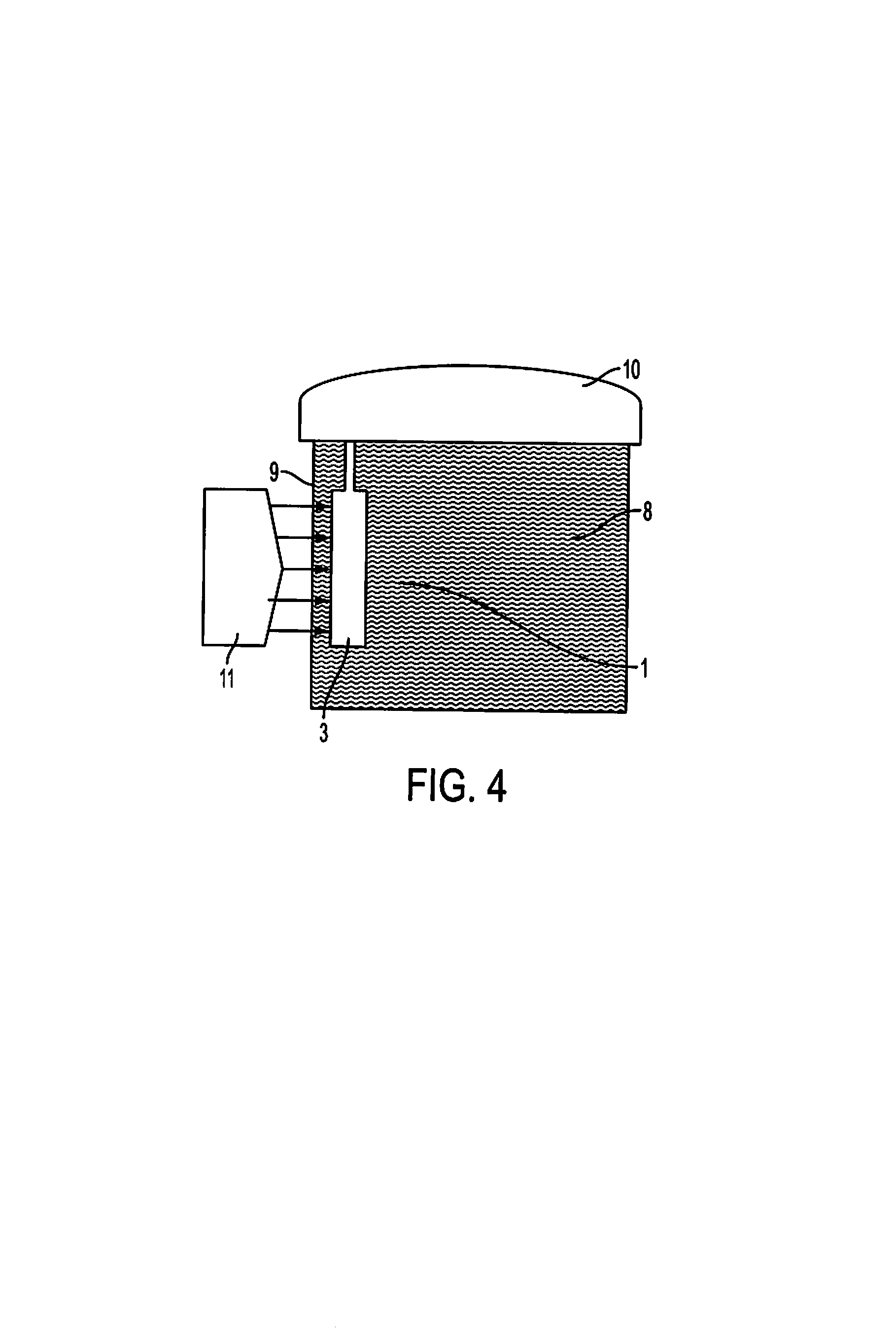Method and device for fixing/stabilizing a sample
a technology for fixing/stabilizing samples, applied in the field of methods and devices for fixing/stabilizing samples, can solve the problems of inability to isolate biomolecules for analytical investigations, affecting the stability of tissue,
- Summary
- Abstract
- Description
- Claims
- Application Information
AI Technical Summary
Benefits of technology
Problems solved by technology
Method used
Image
Examples
example 1
RNA Stabilization in Tissue which has been Fixed in a Permeable Container
[0098]Rat liver, kidney and spleen, directly after removal, were cut into slices with a thickness of about 3 mm. For fixing, the tissue samples were arranged in a permeable container with a length of 4 cm, a width of 2.7 cm and a depth of 5 mm. The permeable container containing the tissue samples was immersed completely into a 500 ml bottle filled with 250 ml of a fixing solution according to composition A of PCT / EP / 2008052371. The fixing solution comprised methanol, acetic acid, 1,3-butanediol and PEG300. After 2 hours, the fixing was ended by transferring the tissue samples in the permeable container into another 500 ml bottle which was filled with 250 ml of a solution according to composition B of PCT / EP / 2008052371, comprising ethanol (p.a.) and 1,3-butanediol. After incubating for 20 h, the samples in the permeable container were transferred into 70% ethanol as the first processing step.
[0099]The tissue pr...
example 2
DNA Stabilization in Tissue which has been Fixed in a Permeable Container
[0107]Tissue samples of rat liver, kidney, spleen and intestine were, as described in Example 1, stabilized in reagents of compositions A and B according to PCT / EP / 2008052371 in the permeable container, processed and embedded in paraffin (with slight alterations: fixing in 300 ml of reagent of composition A and ending of the fixing after 6 h).
[0108]The starting material used for the DNA extraction was fresh slices from the paraffin blocks. The paraffin blocks were cut with a rotary microtome (Leica RM2245), cutting 5 slices with a thickness of 10 μm each from each sample and collecting them in a microcentrifuge tube. The removal of the paraffin was carried out by adding 1 ml of xylene, vortexing and centrifuging at 14000 rpm for 2 min. The supernatant was removed and the pellet was dissolved in 1 ml of 100% ethanol. After centrifuging at 14000 rpm for 2 min and removing the ethanol, the pellet was incubated at ...
example 3
Preservation of the Histology of Tissue Fixed in a Permeable Container
[0113]Tissue samples of rat liver, kidney, spleen and intestine were fixed and stabilized in reagents of compositions A and B according to PCT / EP / 2008052371 in the permeable container as described in Example 1. Subsequently, the samples were processed and embedded in paraffin. In contrast to Example 1, fixing lasted 6 h and processing was commenced 30 h after transfer into a reagent with composition B according to PCT / EP / 2008052371. The processing on a Leica TP1020 instrument was performed according to the protocol described in Table 1, using Neoclear instead of xylene in steps 8-10 and a temperature of 60° C. in the infiltration with paraffin (steps 11 and 12, Table 1).
[0114]For histological analysis, by means of a rotary microtome (Leica RM2245), tissue sections with thicknesses of 4 μm were prepared and secured on glass plates. Staining with hematoxylin and eosin was performed manually with dyes from Sigma Inc....
PUM
 Login to View More
Login to View More Abstract
Description
Claims
Application Information
 Login to View More
Login to View More - R&D
- Intellectual Property
- Life Sciences
- Materials
- Tech Scout
- Unparalleled Data Quality
- Higher Quality Content
- 60% Fewer Hallucinations
Browse by: Latest US Patents, China's latest patents, Technical Efficacy Thesaurus, Application Domain, Technology Topic, Popular Technical Reports.
© 2025 PatSnap. All rights reserved.Legal|Privacy policy|Modern Slavery Act Transparency Statement|Sitemap|About US| Contact US: help@patsnap.com



